It looks like you're using an Ad Blocker.
Please white-list or disable AboveTopSecret.com in your ad-blocking tool.
Thank you.
Some features of ATS will be disabled while you continue to use an ad-blocker.
31
share:
Greetings, ATS!
Why are we so drawn to the mysterious? Could it be the opportunity to understand that captivates us? Or, perhaps, a chance to solve the supposedly unsolvable, thereby earning our place in history?
Well, here are a few ancient (and not so ancient) mysteries....can you decipher the message?
1. Up first is the infamous Voynich Manuscript
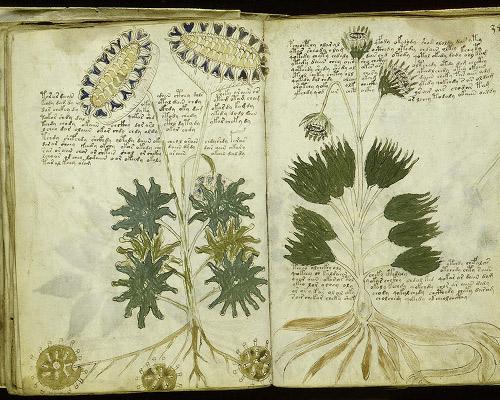
Apparently no one has managed to translate the Voynich Manuscript successfully. An interesting mystery, to be sure.
2. The Beale Ciphers
Supposedly, a man by the name of Thomas Beale left a locked box with an innkeeper named Robert Morris in Lynchburg, Virginia. When opened, the box proved to contain several sheets of encoded script and no encryption key. Supposedly, the sheets (when decoded) would reveal the hidden fortune of Thomas Beale, buried somewhere in Lynchburg, VA.
There are doubts as to the authenticity of the Beale Ciphers, with some claiming it is an elaborate hoax. Despite this, many people do believe in the Beale Ciphers, and have spent years digging for the hidden treasure. I include it here, despite its possibly dubious nature, as it is an interesting story (and quite similar to the movie "National Treasure" in many ways).
3. Phaistos Disc
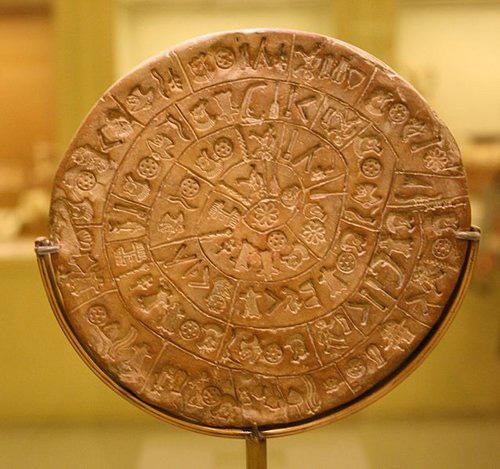
In 1908, Italian archaeologist Luigi Pernier discovered the Phaistos Disc in the Minoan palace site of Phaistos.
The disc remains undeciphered, hence its reputation as one of the most enigmatic discoveries in archeology.
4. The Shugborough Inscription
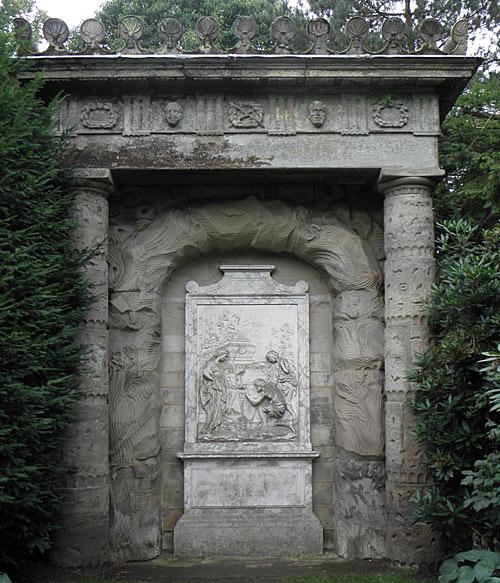
According to some, the code has been deciphered. However, the experts disagree on what the code means; some believe it eludes to the Knights Templar while others insist it is a simple poem to a lost love.
Here is the code: DOUOSVAVVM
5. Rongorongo
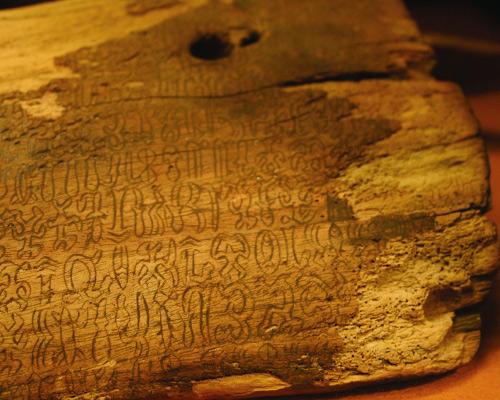
Although it appears the Rongorongo might have been successfully translated, I'll let you follow the link and read about it for yourself.
So there you have it, ATS. A series of mysterious codes, all awaiting your perusal and decryption skills. Good luck, and enjoy!
Why are we so drawn to the mysterious? Could it be the opportunity to understand that captivates us? Or, perhaps, a chance to solve the supposedly unsolvable, thereby earning our place in history?
Well, here are a few ancient (and not so ancient) mysteries....can you decipher the message?
1. Up first is the infamous Voynich Manuscript

Written in Central Europe at the end of the 15th or during the 16th century, the origin, language, and date of the Voynich Manuscript—named after the Polish-American antiquarian bookseller, Wilfrid M. Voynich, who acquired it in 1912—are still being debated as vigorously as its puzzling drawings and undeciphered text. Described as a magical or scientific text, nearly every page contains botanical, figurative, and scientific drawings of a provincial but lively character, drawn in ink with vibrant washes in various shades of green, brown, yellow, blue, and red.
Apparently no one has managed to translate the Voynich Manuscript successfully. An interesting mystery, to be sure.
2. The Beale Ciphers
About a century and a quarter ago, a slim pamphlet was published in Virginia, USA. Amazingly for such an unassuming little document, it has ruined numerous lives, mostly through greed and obsession. It tells the story of buried treasure, and has snared the unwary ever since it was published. It is hard to imagine a treasure more like 'fool's gold' than that described in The Beale Papers. The story revolves around a set of ciphers, that have so far resisted every effort to break them. Fools, read on and become beguiled...
Supposedly, a man by the name of Thomas Beale left a locked box with an innkeeper named Robert Morris in Lynchburg, Virginia. When opened, the box proved to contain several sheets of encoded script and no encryption key. Supposedly, the sheets (when decoded) would reveal the hidden fortune of Thomas Beale, buried somewhere in Lynchburg, VA.
There are doubts as to the authenticity of the Beale Ciphers, with some claiming it is an elaborate hoax. Despite this, many people do believe in the Beale Ciphers, and have spent years digging for the hidden treasure. I include it here, despite its possibly dubious nature, as it is an interesting story (and quite similar to the movie "National Treasure" in many ways).
3. Phaistos Disc

In 1908, Italian archaeologist Luigi Pernier discovered the Phaistos Disc in the Minoan palace site of Phaistos.
The Phaistos pictographs seem unrelated to Minoan hieroglyphs, and no other example of this script has been unearthed. Because the disc is unique, the script remains undeciphered. (Several attempts have been made, but there is no concensus that any one is correct.) Curiously, given that only one example of the script has been found, each pictograph is impressed into the clay disc with a stamp, rather than incised individually. If the disc was intended to be a unique document, why go to the trouble of creating a set of stamps? And if other documents were made, why has none been found? Another curiosity is that stratigraphic evidence dates the disc to about 1700 BCE, at which time another Minoan script was common. This script is called Linear A. It appears to be derived from Minoan hieroglyphic and, like Mesopotamian cuneiform, the signs represent syllables rather than individual sounds. This script, too, remains undeciphered for the most part.
The disc remains undeciphered, hence its reputation as one of the most enigmatic discoveries in archeology.
4. The Shugborough Inscription

For 250 years it defied all code-breakers. Darwin had a go; Dickens, and Wedgwood too. But the 10-letter inscription - DOUOSVAVVM - carved into a monument on the Shugborough Estate in Staffordshire thumbed its nose at the curious. Those of a romantic (or deluded) disposition believed it to be a coded message of the kind used by the Knights Templar and their successors to point to the whereabouts of the Holy Grail or some other religious relic. Others believed it to be a private affirmation of love.
According to some, the code has been deciphered. However, the experts disagree on what the code means; some believe it eludes to the Knights Templar while others insist it is a simple poem to a lost love.
Here is the code: DOUOSVAVVM
5. Rongorongo

In 1864, the French lay missionary Eugène Eyraud -- the first known non-Polynesian resident of Earth's most isolated inhabited island, Easter Island or Rapanui -- reported in a letter to his superior that he had seen there "in all the houses" hundreds of tablets and staffs incised with thousands of hieroglyphic figures [Figure 1]. Two years later, only a small handful of these incised artefacts were left. Most rongorongo, as the unique objects were subsequently called, had by then been burnt, hidden away in caves, or deftly cannibalized for boat planks, fishing lines, or honorific skeins of human hair. The few Rapanui survivors of recent slave raids and contagions evidently no longer feared the objects' erstwhile tapu or sacred prohibition.
Although it appears the Rongorongo might have been successfully translated, I'll let you follow the link and read about it for yourself.
So there you have it, ATS. A series of mysterious codes, all awaiting your perusal and decryption skills. Good luck, and enjoy!
Very interesting thread. One thing that has lead me to believe that the Shugborough may not be as old as is claimed is that it contains a U, and two
Vs, and in antiquity the letter U was often written as V.
edit on 10-3-2013 by hotel1 because: (no reason given)
Great thread. Never heard of a few of these either. Not sure i could crack the codes though
edit on 11-3-2013 by TheDoctor46 because: (no
reason given)
edit on 11-3-2013 by TheDoctor46 because: (no reason given)
I was wondering yesterday what I was going to research.
I'm an info junkie.
These are wonderful treasures. What a great topic!
I'm an info junkie.
These are wonderful treasures. What a great topic!
Don't forget the Jiahu symbols

and I think there is a connection between indus valley and rongorongo
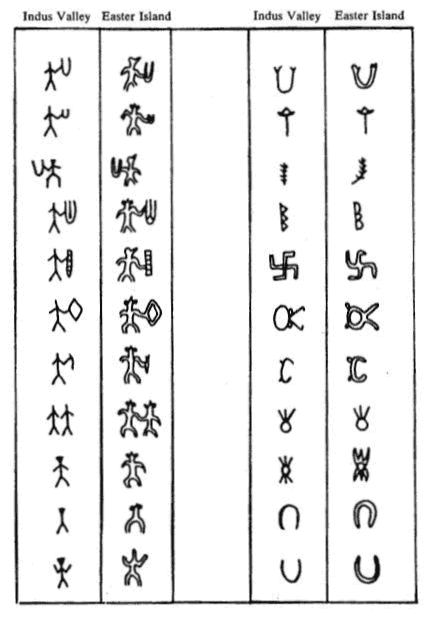
However I hope the above picture is a hoax

and I think there is a connection between indus valley and rongorongo

However I hope the above picture is a hoax
Really nice thread. It is always interesting to see these unsolved mysteries
Although we can never truly know whether they were hoax or not, especially the latter ones. I once saw a documentary on the Voynich one, it covered it pretty deeply and overally it was believed to be a hoax, yet it can never be truly proved, unless someone solves it
Although we can never truly know whether they were hoax or not, especially the latter ones. I once saw a documentary on the Voynich one, it covered it pretty deeply and overally it was believed to be a hoax, yet it can never be truly proved, unless someone solves it
I think they will come to discover with the Voynich Manuscript that it is little more than someone's personal scientific journal. Illuminati perhaps.
The language was encoded because that was the common practice of the time for anything deemed heretical by the church. It would be cool to decipher
it, but I highly doubt it contains any real significant info.
reply to post by smyleegrl
Let's not forget this strange (and still untranslated) artifact:


www.abovetopsecret.com...
Let's not forget this strange (and still untranslated) artifact:


www.abovetopsecret.com...
edit on 12-3-2013 by IAMTAT because: photo added
reply to post by smyleegrl
I was looking at your third entry and I got this impression...
Its a monument that has a picture of three people scrutinizing a monument on it. I suddenly had this notion that somebody figured out a way to keep people busy forever trying to figure it out. He probably snickered at all those who labored over it till his dying day...
...the solution might be there is no solution. Or when you get tired of trying to figure it out, you look up to notice that you are the observer in the relief carving trying to figure it out. The penultimate Middle Ages troll...
I was looking at your third entry and I got this impression...
...carved into a monument on the Shugborough Estate in Staffordshire thumbed its nose at the curious.
Its a monument that has a picture of three people scrutinizing a monument on it. I suddenly had this notion that somebody figured out a way to keep people busy forever trying to figure it out. He probably snickered at all those who labored over it till his dying day...
...the solution might be there is no solution. Or when you get tired of trying to figure it out, you look up to notice that you are the observer in the relief carving trying to figure it out. The penultimate Middle Ages troll...
edit on 12-3-2013 by intrptr because:
additional...
reply to post by JayinAR
Hi Jayin--
Most of the plant identification is a little blurry in the VMS 408 (aka Voynich MS, approx 6 x 9 inches and 209 pages) in the Beinecke Rare Books Library at Yale - (discovered at the Villa Mondragone in Frascati near Rome in 1912 by a Lithuanian spy turned book seller Wilfred Michal Vojnicz aka Voynich) but the ones that have been identified seem to have fertility/abortive/gynocological implications, i.e. the book seems to be a gynocological handbook which is heavilly laden with Astrology, the radiocarbon dating of the vellum (Calf skin) is c. 1420-1440 AD and seems to have written in the area around Brescia (northern Italy, near Milano).
It is perhaps with a gynocological interest that the compiler of this coded herbal-manual sought to place things like dates and times for the best chances of
a. getting pregnant
b. determining or influencing the sex of the foetus in advance through the use of Astrology
c. producing less symptomatic births (some of the plants are 'oxytoctic' i.e. used in antiquity to ease childbirth)
d. abortive (many of the plants are known poisons, e.g. Belladonna or plants that are known to cause spontaneous abortions)
e. cures for swollen ankles for pregnant women in the later stages (the socalled Balneological sections showing pregnant women walking around in a greenish liquid in troughs or pipe like contraptions)
f. recipes at the end of the book for anything for cures for menstral cramps to skin whiteners to recipes for lowering blood pressure and even possibly some make up concoctions...
Most of the human images are pregnant females, some of them holding stars by 'string attachments' - one cannot separate gynecology from the Voynich MS without missing most of its meaning.
As for the weird coded script, it seems to be a shorthand for Medical Italian and Medical Latin with each 'word' an anagram for the correct one (e.g. in modern English letter script the code would work like:
ENGLISH: Take 4 capsules twice a day, at sunrise and at sunset for 6 weeks
VOYNICH CODE: etka orfu pclsaeu ecwti yaad ta iusrsne dan ta eussnt orf xsi keews.
See Edith Sherwood's possible solution to part of the Mystery of the Coding Sequences (which contain many Null values)
www.edithsherwood.com...
Either way, the VMS is NOT gibberish, as some tend to claim !
Hi Jayin--
Most of the plant identification is a little blurry in the VMS 408 (aka Voynich MS, approx 6 x 9 inches and 209 pages) in the Beinecke Rare Books Library at Yale - (discovered at the Villa Mondragone in Frascati near Rome in 1912 by a Lithuanian spy turned book seller Wilfred Michal Vojnicz aka Voynich) but the ones that have been identified seem to have fertility/abortive/gynocological implications, i.e. the book seems to be a gynocological handbook which is heavilly laden with Astrology, the radiocarbon dating of the vellum (Calf skin) is c. 1420-1440 AD and seems to have written in the area around Brescia (northern Italy, near Milano).
It is perhaps with a gynocological interest that the compiler of this coded herbal-manual sought to place things like dates and times for the best chances of
a. getting pregnant
b. determining or influencing the sex of the foetus in advance through the use of Astrology
c. producing less symptomatic births (some of the plants are 'oxytoctic' i.e. used in antiquity to ease childbirth)
d. abortive (many of the plants are known poisons, e.g. Belladonna or plants that are known to cause spontaneous abortions)
e. cures for swollen ankles for pregnant women in the later stages (the socalled Balneological sections showing pregnant women walking around in a greenish liquid in troughs or pipe like contraptions)
f. recipes at the end of the book for anything for cures for menstral cramps to skin whiteners to recipes for lowering blood pressure and even possibly some make up concoctions...
Most of the human images are pregnant females, some of them holding stars by 'string attachments' - one cannot separate gynecology from the Voynich MS without missing most of its meaning.
As for the weird coded script, it seems to be a shorthand for Medical Italian and Medical Latin with each 'word' an anagram for the correct one (e.g. in modern English letter script the code would work like:
ENGLISH: Take 4 capsules twice a day, at sunrise and at sunset for 6 weeks
VOYNICH CODE: etka orfu pclsaeu ecwti yaad ta iusrsne dan ta eussnt orf xsi keews.
See Edith Sherwood's possible solution to part of the Mystery of the Coding Sequences (which contain many Null values)
www.edithsherwood.com...
Either way, the VMS is NOT gibberish, as some tend to claim !
Big fan of the Phaistos Disc.
How cool would it be if it was infact Prepalatial?
SnF
How cool would it be if it was infact Prepalatial?
SnF
reply to post by Sigismundus
I can buy that for sure. It was likely coded for fear of persecution at the hands of the church.
I can buy that for sure. It was likely coded for fear of persecution at the hands of the church.
reply to post by hotel1
Who mentioned antiquity?
The quote below it said "For 250 years it defied all code-breakers" -- that's not antiquity.
One thing that has lead me to believe that the Shugborough may not be as old as is claimed is that it contains a U, and two Vs, and in antiquity the letter U was often written as V.
Who mentioned antiquity?
The quote below it said "For 250 years it defied all code-breakers" -- that's not antiquity.
edit on 3/13/2013 by Chamberf=6 because: (no
reason given)
reply to post by smyleegrl
"Why are we so drawn to the mysterious?"
Because we seek better concepts than the ones we have. If a concept is made hidden then we feel like it must be worth something.
"Why are we so drawn to the mysterious?"
Because we seek better concepts than the ones we have. If a concept is made hidden then we feel like it must be worth something.
new topics
-
Supreme Court Oral Arguments 4.25.2024 - Are PRESIDENTS IMMUNE From Later Being Prosecuted.
Above Politics: 1 hours ago -
Krystalnacht on today's most elite Universities?
Social Issues and Civil Unrest: 1 hours ago -
Chris Christie Wishes Death Upon Trump and Ramaswamy
Politicians & People: 2 hours ago -
University of Texas Instantly Shuts Down Anti Israel Protests
Education and Media: 4 hours ago -
Any one suspicious of fever promotions events, major investor Goldman Sachs card only.
The Gray Area: 6 hours ago -
God's Righteousness is Greater than Our Wrath
Religion, Faith, And Theology: 10 hours ago
top topics
-
VP's Secret Service agent brawls with other agents at Andrews
Mainstream News: 15 hours ago, 11 flags -
Nearly 70% Of Americans Want Talks To End War In Ukraine
Political Issues: 16 hours ago, 6 flags -
Sunak spinning the sickness figures
Other Current Events: 15 hours ago, 5 flags -
Supreme Court Oral Arguments 4.25.2024 - Are PRESIDENTS IMMUNE From Later Being Prosecuted.
Above Politics: 1 hours ago, 4 flags -
Electrical tricks for saving money
Education and Media: 13 hours ago, 4 flags -
Krystalnacht on today's most elite Universities?
Social Issues and Civil Unrest: 1 hours ago, 4 flags -
Late Night with the Devil - a really good unusual modern horror film.
Movies: 17 hours ago, 3 flags -
Any one suspicious of fever promotions events, major investor Goldman Sachs card only.
The Gray Area: 6 hours ago, 2 flags -
University of Texas Instantly Shuts Down Anti Israel Protests
Education and Media: 4 hours ago, 2 flags -
Chris Christie Wishes Death Upon Trump and Ramaswamy
Politicians & People: 2 hours ago, 1 flags
active topics
-
Supreme Court Oral Arguments 4.25.2024 - Are PRESIDENTS IMMUNE From Later Being Prosecuted.
Above Politics • 6 • : TzarChasm -
University of Texas Instantly Shuts Down Anti Israel Protests
Education and Media • 92 • : FlyersFan -
President BIDEN Vows to Make Americans Pay More Federal Taxes in 2025 - Political Suicide.
2024 Elections • 143 • : SchrodingersRat -
SETI chief says US has no evidence for alien technology. 'And we never have'
Aliens and UFOs • 65 • : andy06shake -
Sunak spinning the sickness figures
Other Current Events • 18 • : andy06shake -
British TV Presenter Refuses To Use Guest's Preferred Pronouns
Education and Media • 155 • : Annee -
Nearly 70% Of Americans Want Talks To End War In Ukraine
Political Issues • 76 • : FlyersFan -
The Reality of the Laser
Military Projects • 49 • : 5thHead -
Chris Christie Wishes Death Upon Trump and Ramaswamy
Politicians & People • 6 • : mysterioustranger -
"We're All Hamas" Heard at Columbia University Protests
Social Issues and Civil Unrest • 282 • : 5thHead
31
